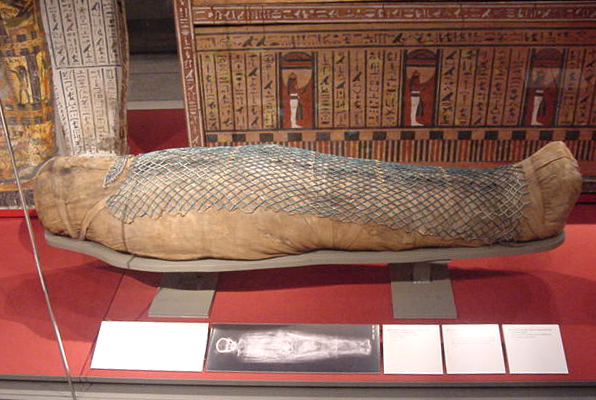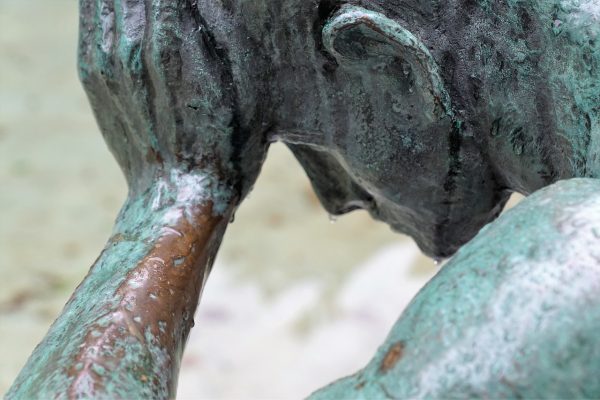Ancient Egypt

The Basics of Egyptology
Egyptology is the study of Egypt, and its long ancient history. The history of Ancient Egypt is mostly based in 3 parts of time. The Old Kingdom spanning from 2650B.C.-2450B.C., the Middle Kingdom spanning from 2450B.C. to 1550B.C., and finally the New Kingdom 1550 to 712B.C. until the death of Cleopatra. In all, Ancient Egypt’s history lasted 3000 years. More than 30 dynasties of pharaohs ruled this great land.
Pharaoh
The Ancient Egyptians always believed that pharaohs where gods on earth. They worshiped and praised them as such. In some parts of the history it was split between 2 different pharaohs each ruling a separate part. Each had its own crown. The Red Crown was associated with lower Egypt- the area of Memphis and northward, around the Nile Delta. The White Crown was the crown of Upper Egypt, the area stretched from Memphis Southward to Thebes and beyond (as if they changed directions). Also there was the Blue Crown which was known as the war crown as seen on Seti 1st and Rameses 2nd , who wore the crown in battle. As the King of both Upper and Lower Egypt the pharaoh wore a double crown made up of the white and red crowns.
Everyday Life in Egypt
Daily life in Ancient Egypt revolved around the Nile, and the fertile land along its banks. The yearly flooding of the Nile enriched the soil and brought good harvests and wealth to the land. The people of Ancient Egypt built mud-brick homes in villages and in the country. They grew their own food and traded with people in nearby settlements for the food and goods they could not produce on their own. Most of the population worked as farmers, craftsmen, and scribes.
A small group of the populace were nobles, priests, and royalty. Together, these different groups of people made up the population of Ancient Egypt. Also the Egyptian law and military system provided jobs for others. The Law System in Egypt was that of the Medjay. Mostly present in the New Kingdom, a Medjay is like a sheriff that is assigned an area of the country to keep the peace, also served as the pharaoh’s personal guard. You can get a good idea of who they were if you look at knights during Medieval Times. Think of them as the Knights of the Pharaoh.
Egyptian Religion
The religion of Ancient Egypt is a polytheistic belief. Polytheistic means belief in more than one god. The Ancient Egyptians had over 40 different gods. They had temples (places of worship) where they prayed and made offerings to bring the country or the village good fortune. Each Temple had a priest which was in charge. Some of the more known gods worshiped by the people are Osiris (the god of the underworld), his son Horus (god of the air), Isis (the goddess of medicine and magic), Thoth (the god of knowledge), Seth (the god of chaos), etc. Some of the temples still remain in Egypt as relics of the past.
The religion was largely based on a belief in an afterlife. The whole belief was that once an individual are buried and mummified, the book of the dead would lead them to the gates to the Duat, the world between worlds. There one would have to go on a journey with the book of the dead to the Hall of the Two Truths, there ones heart would be weighed against the feather of truth. If it was balanced, one went to the afterlife. If not, a giant alligator ate one’s soul. Seemed pretty legit.
Tombs
The burial system in Egypt consisted of a few things. The first step was mummification. The body was in a way “dissected” of all organs. Then the body would be wrapped in linen, so it was preserved. Rich families where buried with loved possessions, pets, riches, etc. to help them in the afterlife. Tombs were made only for the rich, like priests or pharaohs. Usually they were dug in a long tunnel leading to a chamber containing the body with the riches either around or in a separate treasure room. Most tombs like these can be found in the Valley of the Kings in Egypt. Other forms of tombs were the all famous pyramids. The Pyramids in Giza are the biggest, but aren’t the only pyramid “tombs” in Egypt. Some were step pyramids, others where the more traditional triangular prism shape.
What do we still not know?
Believe it or not we still have much to learn about this great empire that was once Egypt. Who knows what we will find in the years to come? So visit Egypt- explore, discover, learn, and never forget!










